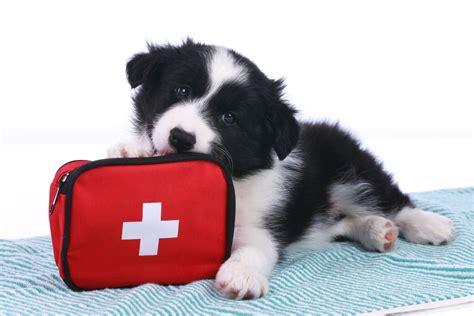Dog Emergency FAQs: A Pup Above

Table of Contents
- Glossary of Dog Emergency Terms
- How to Prepare for a Dog Emergency
- First Aid for Dogs
- When to Call the Vet
- Veterinary Care for Dogs in an Emergency
- Home Care for Dogs After an Emergency
- Dog Emergency Resources
Glossary of Dog Emergency Terms
- Anaphylaxis: A life-threatening allergic reaction that can cause swelling of the face, throat, and airways.
- Asphyxia: A condition in which the dog’s airway is blocked, preventing it from breathing.
- Bloat: A life-threatening condition in which the dog’s stomach fills with gas and twists.
- CPR: Cardiopulmonary resuscitation, a technique used to restart a dog’s heart and breathing.
- Dehydration: A condition in which the dog’s body does not have enough fluids.
- Distemper: A viral infection that can cause respiratory problems, vomiting, diarrhea, and seizures.
- Heatstroke: A life-threatening condition in which the dog’s body temperature rises too high.
- Hypothermia: A condition in which the dog’s body temperature drops too low.
- Parvovirus: A viral infection that can cause vomiting, diarrhea, and lethargy.
- Rabies: A viral infection that can cause seizures, paralysis, and death.
How to Prepare for a Dog Emergency
- Keep a first aid kit for dogs in your home and car.
- Learn how to perform CPR and first aid on dogs.
- Have a plan for what to do if your dog has an emergency.
- Keep your dog’s vaccinations up to date.
- Be aware of the signs and symptoms of common dog emergencies.
First Aid for Dogs
- If your dog is not breathing, start CPR immediately.
- If your dog is choking, try to dislodge the object from its throat.
- If your dog is bleeding, apply pressure to the wound to stop the bleeding.
- If your dog is vomiting, try to keep it calm and hydrated.
- If your dog is diarrhea, try to keep it hydrated and clean up the mess.
When to Call the Vet
- If your dog is not breathing, start CPR immediately and call the vet.
- If your dog is choking, try to dislodge the object from its throat and call the vet if you are unsuccessful.
- If your dog is bleeding, apply pressure to the wound to stop the bleeding and call the vet if the bleeding does not stop.
- If your dog is vomiting or diarrhea, try to keep it hydrated and clean up the mess and call the vet if the vomiting or diarrhea does not stop.
Veterinary Care for Dogs in an Emergency
- If your dog has a life-threatening emergency, the vet will likely need to perform CPR or other emergency procedures.
- The vet may also need to give your dog fluids, antibiotics, or other medications.
- The vet will likely want to keep your dog in the hospital for observation and treatment.
Home Care for Dogs After an Emergency
- Once your dog has been treated for an emergency, the vet will likely give you instructions on how to care for it at home.
- The vet may recommend that you give your dog medication, rest, or a special diet.
- The vet may also want to see your dog back for a follow-up appointment.
Dog Emergency Resources
- American Veterinary Medical Association: https://www.avma.org
- American Red Cross: https://www





















